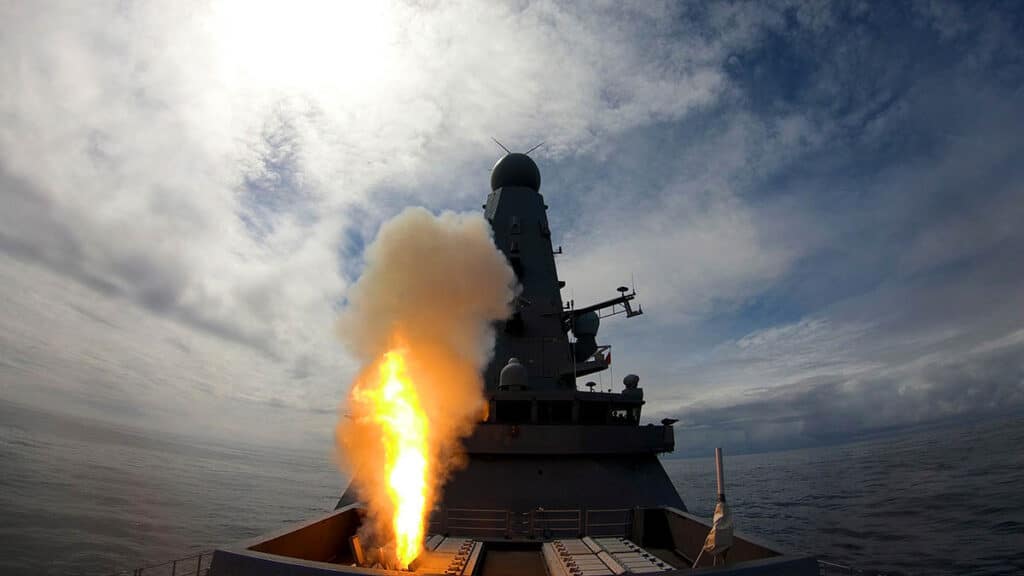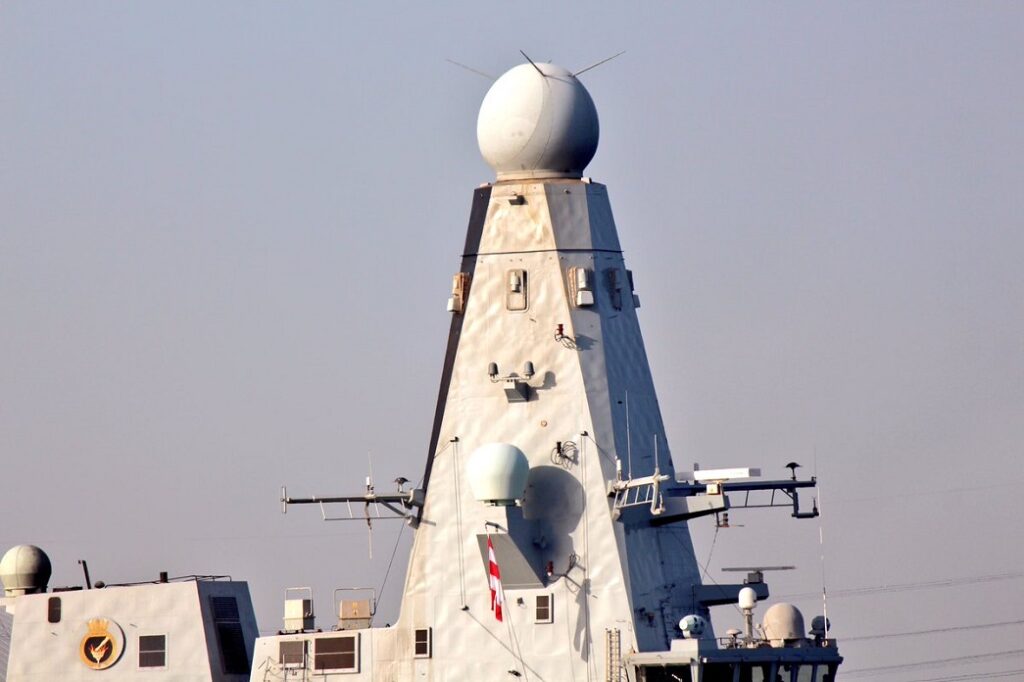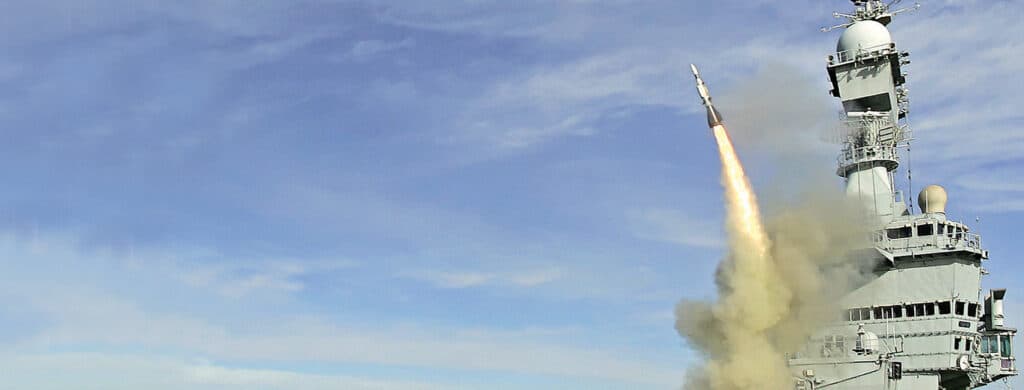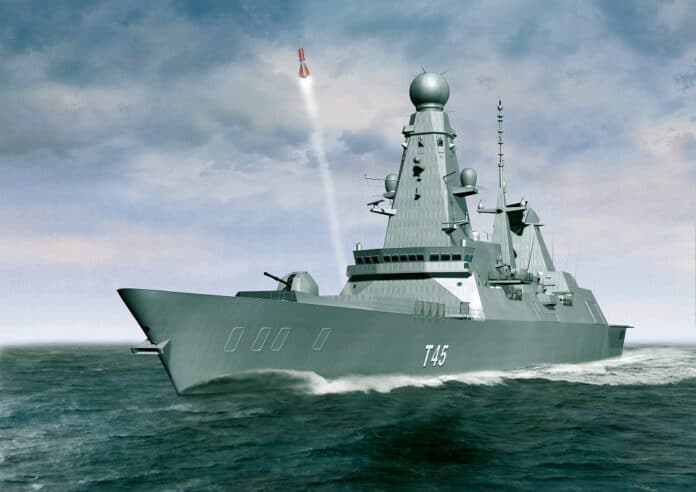The Principal Anti Air Missile System (PAAMS) is a joint program developed by France, Italy, and the UK for an integrated anti-air warfare system.
The system is in service with the Royal Navy, French Navy, and the Italian Navy. The Sea Viper system is also known as PAAMS(S) to denote the SAMPSON radar’s use and distinguish it from the PAAMS system on the Franco-Italian Horizon Class.
Having left the ‘Common New Generation Frigate’ project in October 1999, United Kingdom decided to pursue a national warship design, designated the Type 45 destroyer. On 28 January 2009, the PAAMS was given its official designation of Sea Viper by the Royal Navy.
The Sea Viper is a highly sophisticated system that includes long-range and missile-directing radars, a combat control center, and vertical launcher missile silos. The system is designed to protect both land and sea forces from aircraft attacks and defend the naval fleet against supersonic anti-ship missiles. The Sea Viper air defence system is composed of SAMPSON and S1850M long-range radars, a combat management system, the Sylver missile launching system, and Aster 15 and Aster 30 missiles.
Sea Viper uses this information to assess and command target priorities and calculate the optimum launch time for its Aster missiles. It can track more than 1,000 targets at ranges of up to 400 km. Sea Viper is designed to track, target, and destroy various high-performance air threats, including saturation attacks of very low altitude, supersonic cruise missiles, fighter aircraft, and UAVs. It can launch eight missiles in under ten seconds with its Sylver Vertical Launching System and simultaneously guide up to 16 missiles.

Sampson Radar
The SAMPSON is a multi-function dual-face active electronically scanned array radar produced by BAE Systems Maritime. It is the fire control radar component of the Sea Viper naval system. The SAMPSON multi-function radar can detect all types of targets out to a distance of 400 km and can track hundreds of targets at any one time. SAMPSON radar can track objects the size of a cricket ball travelling at three times the speed of sound (Mach 3), emphasizing the system’s capabilities against high-performance stealth targets.
Conventional radars, consisting of a rotating transmitter and sensor, have limited power, are vulnerable to enemy jamming, and perform only one function – with separate units required for surveillance, tracking, and targeting.

As an active array, SAMPSON uses software to shape and direct its beam, allowing several functions to be carried out at once. Through adaptive waveform control, it is virtually immune to enemy jamming. Active arrays have both a more extended range and higher accuracy than conventional radars. The beam-directing software uses sophisticated algorithms to schedule looks so that the potentially hundreds of active tracks are maintained with maximum precision.
The SAMPSON uses two planar arrays to provide coverage over only part of the sky; the complete range is provided by rotating the arrays, essentially similar to the way conventional radar systems operate. This is in contrast to the US AN/SPY-1 system (as used on the Ticonderoga class cruiser and Arleigh Burke-class destroyer) or the Dutch APAR system (as used on the Royal Netherlands Navy’s De Zeven Provinciën class frigates, the German Navy’s Sachsen class frigates, and the Royal Danish Navy’s Ivar Huitfeldt class frigates), which use multiple arrays fixed in place to provide continuous coverage of the entire sky.
While this may seem to be a disadvantage, the SAMPSON radar rotates at 30 revolutions per minute, with two back-to-back arrays, meaning no part of the sky lacks coverage for more than one-half second on average – the precise time varies as the beams can also be swept back and forth electronically. In addition, the use of a smaller number of arrays allows the system to be much lighter, allowing placement of the arrays at the top of a prominent mast rather than on the side of the superstructure as in the Dutch or US ships. Placing any radar emitter at a higher altitude extends the horizon distance, improving performance against low level or sea-skimming targets; SAMPSON is approximately double the height above the waterline than the arrays of its Dutch or US equivalents. Although precise details of the SAMPSON’s performance in this regard are unlikely to enter the public domain, such factors may mitigate the disadvantages of fewer arrays.
S1850M Long Range Radar
Some tasks are difficult to combine; for example, (long-range) volume search takes many radar resources, leaving little room for other tasks such as targeting. Combining volume search with other jobs also results in slow search rates or low overall quality per task. Driving parameters in radar performance is time-on-target or observation time per beam. That is why the Royal Navy selected the S1850M Long Range Radar to complement Sampson on the Type 45 destroyers. S1850M radar is an upgraded version of the Dutch SMART-L. Once the S1850M long-range radar identifies a threat, SAMPSON, the fire control radar, is engaged in providing information on the target’s trajectory and calculating a firing solution. To hire a threat, Aster 15 and Aster 30 interceptors are launched autonomously—in quick succession if needed—from Sylver Vertical Launching Systems, which can house up to eight Aster interceptors in one launch tube.

Aster Missiles
The Aster missile family comprises Aster 15 for short to medium range and Aster 30 for short to long range. There is an extensive commonality between the two variants, with both missiles featuring the same terminal dart. Aster’s terminal dart is a lightweight, highly manoeuvring and agile missile equipped with a high-performance active RF seeker. Thanks to the unique combination of aerodynamic control and direct thrust vector control called “PIF-PAF,” the rocket can perform high manoeuvres.
Aster 30 Used for short- to long-range air defence. Aster 15 is used for short- to medium-range air defence. Aster 15 has capable of travelling over 30 km at speeds of Mach 3. Aster 30 can travel over 120 km at speeds of Mach 4 and has a maximum altitude of 65,000 ft.

Conclusion
Commonly referred to as the English counterpart to the U.S.-made Aegis Combat System, Sea Viper allows the United Kingdom to defend their naval forces against modern and numerous aerial threats using domestically produced technology; without relying on American defence technology. Like the American Aegis Combat System, Sea Viper can counter current aerial threats such as Russian cruise missiles and combat aircraft. The system is interoperable with NATO’s Integrated Air and Missile Defense System and can send and receive tracking information on air-breathing and space-based threats.
Russia’s recent military modernization and creation of anti-access/area-denial (A2/AD) “bubbles” in the Baltic and Black Seas have revitalized the importance of NATO’s collective air and missile defence capabilities. With artificial intelligence capability and its modern Aster interceptors capable of countering a range of modern Russian cruise missiles and combat aircraft, the Sea Viper system serves as the ideal weapon system for operating within Russian A2/AD bubbles.
Check out Naval Library App to find out the specifications of the systems of Type 45-class destroyers.





